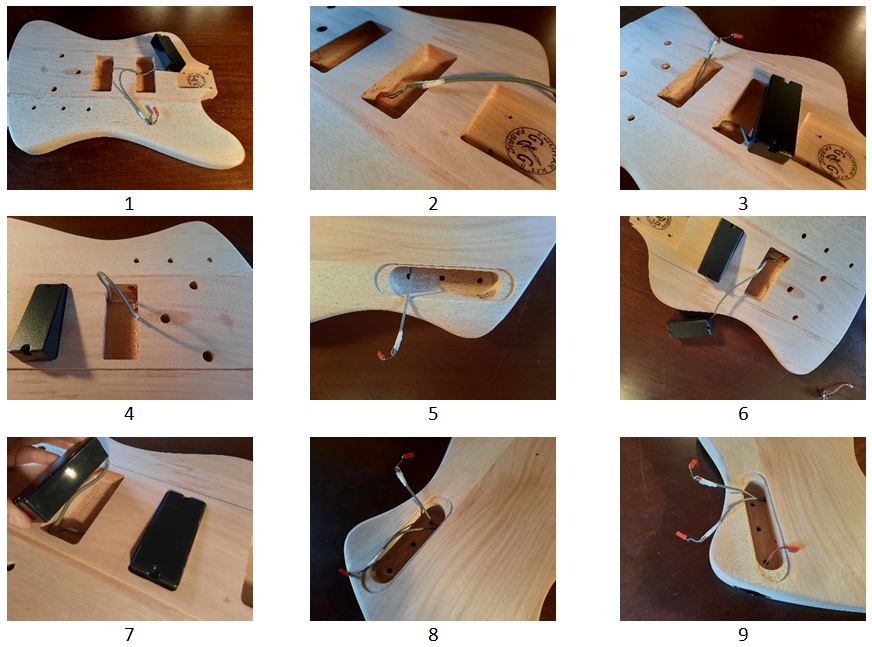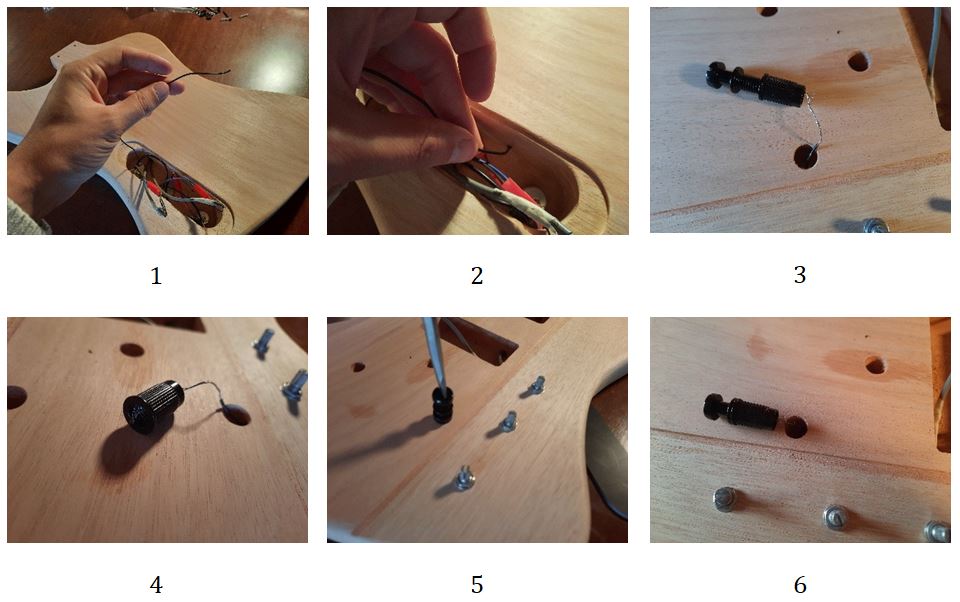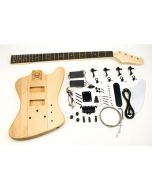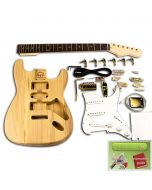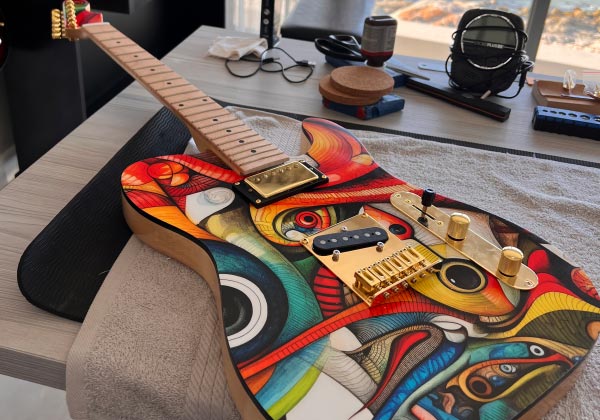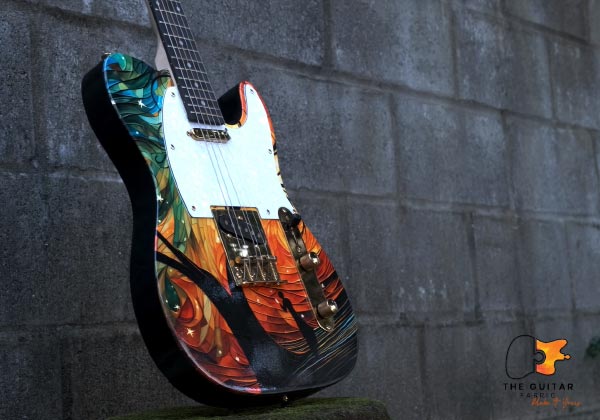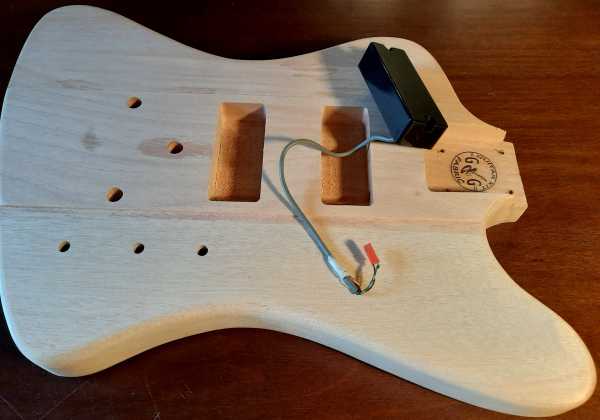
WIRING THE ELECTRONICS OF A GUITAR KIT
When it comes to building an electric guitar, wiring and grounding the electronics play a crucial role in achieving optimal performance. Properly connecting circuits ensures that your guitar produces the desired tone without unwanted interference. In this guide, we'll delve into the process of wiring and grounding your guitar's electronics, highlighting key techniques and considerations.
Electric Plug Connections of The Guitar fabric guitar kits
For a hassle-free experience, the guitar kits from The Guitar Fabric use all electric plug push type connection feature to easily connect circuits altogether. This eliminates the need for soldering and streamlines the process. Connect the plugs to their corresponding connections, a straightforward task. Remember to attach the remaining ground wire to one of the bridge screws or studs, enhancing grounding without requiring soldering.
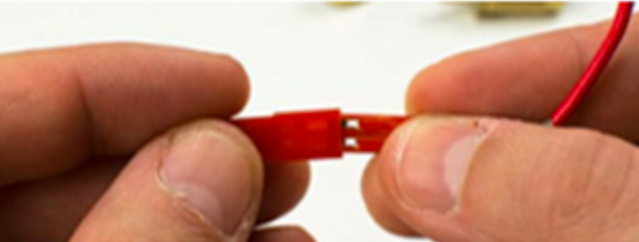
Push type connection feature
Testing the electronics before installation on the guitar kit
Prior to install the electronics on your guitar kits, it is a good habit to try the electronics upfront and make sure you understand the connection, that everything is working as expected. If you have an issue later on during installation on the guitar that it will be due to something else like creating an unwanted short circuit.
Connect your socket to the jack plug and your guitar amp as shown below.
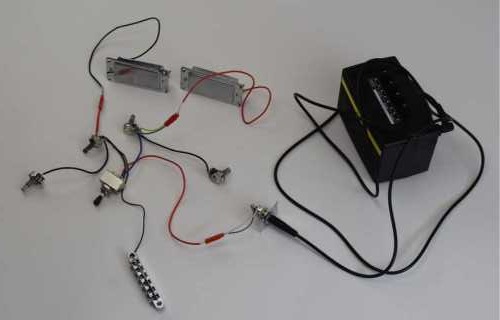
From there try different tone, volume and switch position and for each case hit gently each pick up with your finger for instance to verify that the sound output meets your expectations.
Preventing Interference by shielding your cavities
To mitigate unwanted noise and interference, consider building a Faraday cage in specific areas. Copper shielding tape is a valuable asset for shielding the pickup cavities and back wiring cavity, ensuring a clean and noise-free signal.

Installing electronics into the cavity and grounding
All connections can be housed in the rear cavity. Ensure that wires within the cavity are well-isolated to prevent electrical short circuits. A prime example of effective ground wire setup involves the use of a tune-o-matic bridge.
Example of routing and wiring the Firebird guitar bass: Wires should pass through pre-drilled holes associated with their components, ensuring clean cable management. Organize the wiring between pots, jack sockets, and pickups meticulously, while using push-type connections for a seamless setup.


Example of grounding a tune-o-matic bridge: Pass the ground wire cable through the hole connected to the bridge and wire it to the studs as demonstrated. Strip the wire and insert it into the stud parts.
In conclusion, wiring and grounding the electronics of your guitar is a meticulous yet rewarding process. By following the techniques outlined in this guide, you can achieve optimal performance, minimize interference, and create a guitar that delivers the desired tone. Whether you're a seasoned guitarist or a DIY enthusiast, mastering these wiring and grounding techniques will undoubtedly enhance your playing experience.
 UK
UK FR
FR DE
DE IT
IT ES
ES
